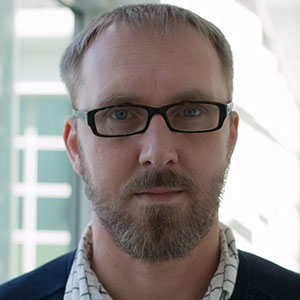Tobias received his PhD in Physics from Chalmers University of Technology, Sweden, in 2005.
After his PhD Tobias worked as a postdoctoral researcher at NPL, University of Birmingham and Royal Holloway, University of London. He joined NPL as a Senior Scientist in 2012 and was promoted to Principal Scientist in 2020. In 2024 he became the Head of Science for the department of Quantum Technology.
During his time at NPL, Tobias has primarily worked on superconducting quantum technology. In addition to conducting research relevant for the emerging superconducting quantum computing sector, he has also pioneered the use of precision frequency metrology methods for the study of noise in superconducting resonators and qubits.
Tobias is active in several organisations developing international standards for quantum technology.
Areas of interest
Tobias research interests include many aspects of solid-state quantum information processing. In particular the study of decoherence mechanisms and other topics related to the materials used to fabricate quantum circuits. He is also involved in the development of novel methods and instruments for characterising quantum circuits.
Current areas of interest include:
- Decoherence and noise in superconducting qubits due to microscopic TLS
- Hybrid superconductor-spin systems
- Benchmarking and metrics for quantum computers
- Quantum networks
- Techniques for scaling-up of superconducting quantum computers.
- RF metrology at millikelvin temperatures
Selected Publications
- “In-operando microwave scattering-parameter calibrated measurement of a Josephson traveling wave parametric amplifier”
S.-H. Shin, M. Stanley, W. N. Wong, T. Sweetnam, A. Elarabi, T. Lindström, N. M. Ridler, S. E. de Graaf Appl. Phys. Lett. 2 September 2024; 125 (10): 104001.
https://doi.org/10.1063/5.0220776
- "Chemical and structural identification of material defects in superconducting quantum circuits"
S. E. de Graaf, S. Un, A. G. Shard, and T. Lindström.
Materials for Quantum Technology 2, no. 3 (2022): 032001.
https://doi.org/10.1088/2633-4356/ac78ba
- "Pulsed electron spin resonance of an organic microcrystal by dispersive readout"
Journal of Magnetic Resonance 321 (2020): 106853.
A. Keyser J.J. Burnett, S. E. Kubatkin, A. V. Danilov, M. Oxborrow, S. E. de Graaf,
and T. Lindström
https://doi.org/10.1016/j.jmr.2020.106853
- “Two-level systems in superconducting quantum devices due to trapped quasiparticles”
Science advances, 6(51), p.eabc5055. (2020)
S.E de Graaf, L. Faoro, L.B. Ioffe, S. Mahashabde, J.J. Burnett, T. Lindström, S.E. Kubatkin, A.V. Danilov, A.V and A.Ya Tzalenchuk
https://doi.org/10.1126/sciadv.abc5055
- "Suppression of low-frequency charge noise in superconducting resonators by surface spin desorption" Nature communications 9, no. 1 (2018): 1-6.
S. E de Graaf, L. Faoro, J. Burnett, A. A. Adamyan, A. Ya Tzalenchuk,
S. E. Kubatkin, T. Lindström, and A. V. Danilov.
https://doi.org/10.1038/s41467-018-03577-2
